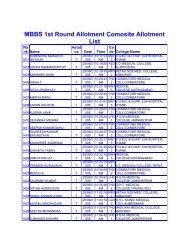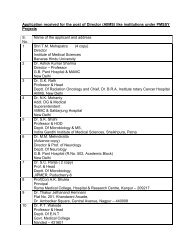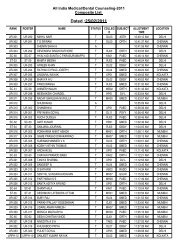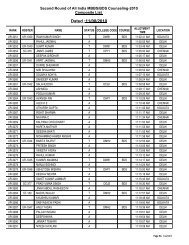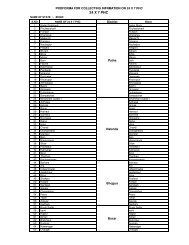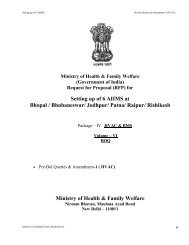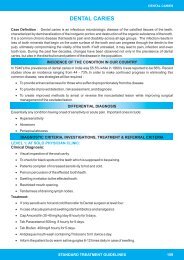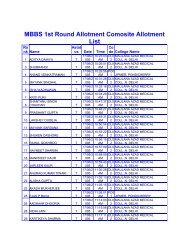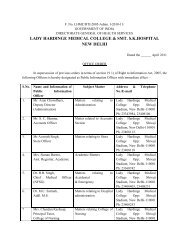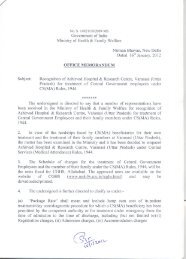manual of methods of analysis of foods - Ministry of Health and ...
manual of methods of analysis of foods - Ministry of Health and ...
manual of methods of analysis of foods - Ministry of Health and ...
You also want an ePaper? Increase the reach of your titles
YUMPU automatically turns print PDFs into web optimized ePapers that Google loves.
METALS<br />
(ii)<br />
Make slightly alkaline to litmus with NH 4 OH, keeping the solution<br />
cool, swirl gently <strong>and</strong> let st<strong>and</strong> 1 to 2 min. At this stage solution<br />
should be clear without any precipitate. (If precipitate forms,<br />
redissolve with HCl transfer solution to a stoppered conical flask <strong>and</strong><br />
adjust to pH 3.0 to 3.4 (bromophenol blue) with NH 4 OH. If enough Fe<br />
is present to colour solution strongly, make adjust with the help <strong>of</strong><br />
spot plate. Dissolve any precipitate, if formed, by shaking <strong>and</strong> cooling.<br />
If amount <strong>of</strong> lead expected is small, add 5 to 10 mg <strong>of</strong> pure<br />
CuSO 4 .5H 2 O to solution. Pass in H 2 S until solution is saturated (3 to 5<br />
min), immediately filter with suction. Dissolve the residue <strong>of</strong><br />
precipitated sulphides, without previous washing, with 5 ml <strong>of</strong> hot<br />
HNO 3 drawing solution through into orginal flask, wash with hot<br />
water. Stopper the flask, shake the HNO 3 <strong>and</strong> water washes well <strong>and</strong><br />
boil the solution to remove H 2 S. Transfer this solution to separator add<br />
citrate solution equivalent to 5 g <strong>of</strong> citric acid, make ammonical <strong>and</strong><br />
proceed from step (iii) onwards.<br />
(iii) To the clear solution obtained after step (ii), add 5 ml <strong>of</strong> 10% KCN<br />
solution (more may be necessary if large amount <strong>of</strong> Zn, Cu, Cd etc are<br />
present), shake <strong>and</strong> check the pH <strong>of</strong> the solution by adding a drop <strong>of</strong><br />
thymol blue indicator solution (pH should preferably be 8.5 to 9.5<br />
blue green to blue colour with thymol blue).<br />
(iv) Immediately add 20 ml <strong>of</strong> dithizone solution (in this step usually<br />
solution <strong>of</strong> 8 mg dithizone / L <strong>of</strong> CHCl 3 is adequate), shake for 20 to<br />
320 sec <strong>and</strong> let layers separate. Transfer the CHCl 3 layer to small<br />
separator containing 25 ml <strong>of</strong> 1% HNO 3 .<br />
45



